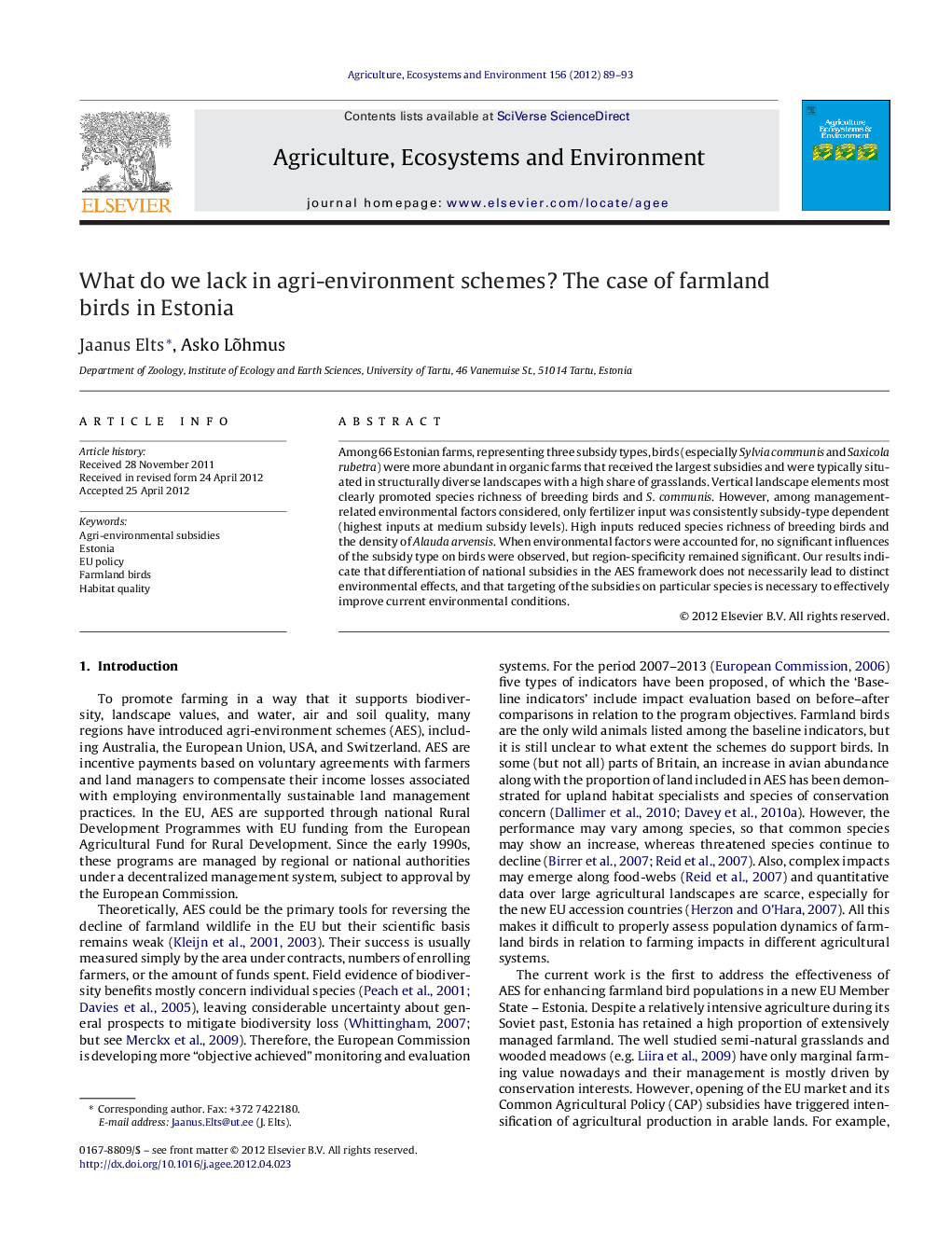| Article ID | Journal | Published Year | Pages | File Type |
|---|---|---|---|---|
| 2414475 | Agriculture, Ecosystems & Environment | 2012 | 5 Pages |
Among 66 Estonian farms, representing three subsidy types, birds (especially Sylvia communis and Saxicola rubetra) were more abundant in organic farms that received the largest subsidies and were typically situated in structurally diverse landscapes with a high share of grasslands. Vertical landscape elements most clearly promoted species richness of breeding birds and S. communis. However, among management-related environmental factors considered, only fertilizer input was consistently subsidy-type dependent (highest inputs at medium subsidy levels). High inputs reduced species richness of breeding birds and the density of Alauda arvensis. When environmental factors were accounted for, no significant influences of the subsidy type on birds were observed, but region-specificity remained significant. Our results indicate that differentiation of national subsidies in the AES framework does not necessarily lead to distinct environmental effects, and that targeting of the subsidies on particular species is necessary to effectively improve current environmental conditions.
► Differentiation of subsidies did not lead to distinct benefits for farmland birds. ► High fertilizer inputs reduced richness of breeding birds. ► Vertical landscape elements promoted species richness of breeding birds. ► Sylvia communis and Saxicola rubetra were more abundant in organic farms.
